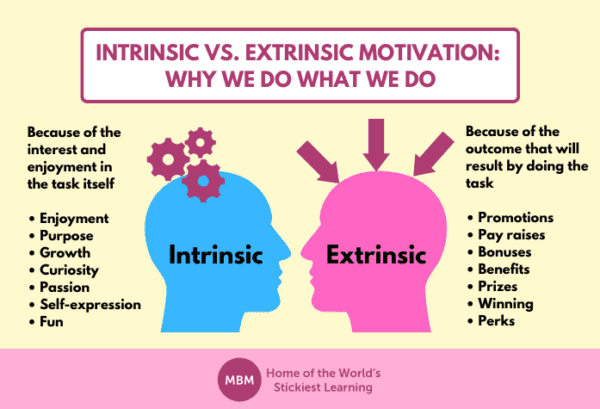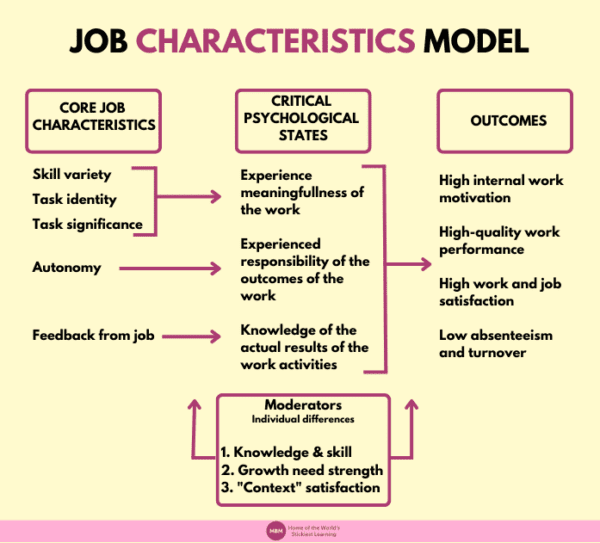Are your Employees truly Satisfied with their Jobs, or are they just going through the Motions?
What if there was a way to unlock your employee’s full potential and unleash a wave of productivity, creativity, and loyalty? Well, ensuring job satisfaction is one way to do exactly that.
It’s important to note that job satisfaction goes beyond mere contentment. In fact, it’s about creating a fulfilling workplace where employees thrive and contribute their best. Furthermore, engaged and satisfied employees are the lifeblood of any organisation. This is because they drive innovation, exceed performance expectations, and become loyal brand ambassadors.
In this guide, we’ll give you the key to unlocking employee engagement and happiness. Job satisfaction is the cornerstone of a successful organisation, and by implementing the right strategies, you can open the door to a motivated and satisfied workforce.
What is Job Satisfaction and Why It Matters

Job satisfaction plays a crucial role in shaping employee performance and well-being. It goes beyond mere contentment and encompasses a range of factors that truly make employees satisfied with their work. This multidimensional nature acknowledges that it is not just about a paycheck or a pleasant work environment, but also about finding meaning and purpose in one’s job.
Of Course, It’s About the Employees
Firstly, employees value aspects such as challenging and stimulating tasks, opportunities for growth and development, supportive relationships with colleagues and superiors, a sense of autonomy and control, and alignment with organisational values.
Research consistently highlights the direct link between job satisfaction, employee performance, and overall well-being. Specifically, when employees feel satisfied in their roles, they tend to be more engaged, motivated, and productive.
Moreover, a high level of job satisfaction contributes to lower stress levels, improved mental health, and a better overall quality of life. Understanding the multidimensional nature of job satisfaction and prioritising it within the workplace can create an environment that fosters employee satisfaction, leading to enhanced performance and well-being.

>> Stress Management Coaching Cards <<
But It Also Benefits the Workplace
Job satisfaction is also closely intertwined with employee engagement, productivity, and retention, forming a crucial nexus within the workplace. When employees are satisfied with their jobs, they are more likely to be engaged, meaning they feel a strong connection to their work and are motivated to give their best effort.
Additionally, job satisfaction fuels commitment, enthusiasm, and discretionary effort, as employees feel a sense of fulfilment and purpose in their roles. This heightened engagement translates into higher productivity levels — a greater willingness to take initiative, think creatively, and collaborate with their colleagues, ultimately driving positive outcomes.
Moreover, job satisfaction has a significant impact on employee retention. It’s true that satisfied employees are more likely to stay with the organisation, reducing turnover costs and maintaining a stable workforce. Also, they are more likely to form strong bonds with their colleagues and develop a sense of loyalty towards the organisation, creating a positive cycle of longevity and continuity.
Aside from employee retention, better job satisfaction among employees brings significant business benefits. When employees are more satisfied with their work, they tend to be more motivated and productive. This increased productivity leads to improved efficiency and higher-quality outputs, ultimately driving better business outcomes. Satisfied employees are also more likely to stay with the company, which maintains a stable, experienced workforce.
The Four Factors of Job Satisfaction

When considering job satisfaction, it is crucial to recognise the multidimensional nature of the concept. Various factors contribute to overall job satisfaction, and it is important not to overlook the significance of any of them.
Why? These elements play a significant role in shaping employees’ satisfaction levels and their overall experience in the workplace. A comprehensive understanding of job satisfaction entails considering the holistic perspective of the work environment, organisational culture, and individual needs and aspirations.
1 – Work Environment
Establishing a positive work environment is crucial for enhancing job satisfaction and performance. Providing regular feedback and recognition for employee contributions reinforces a positive work environment and enhances motivation and engagement. Effective communication and collaboration go down a different road — they foster teamwork and innovation — while supporting work-life balance positively impacts both satisfaction and productivity.
Ultimately, all of the above contribute to a positive and motivating work environment — but none more so than work-life balance. Offering flexible working hours enables employees to manage personal and professional responsibilities effectively, improving their work-life balance. By prioritising these aspects, businesses can cultivate an environment where employees thrive, leading to heightened satisfaction and improved overall performance.
2 – Career Development and Growth Opportunities
Career development and growth opportunities are vital for employee satisfaction and organisational success. Skill enhancement and professional growth initiatives empower employees to reach their potential, while career planning and progression strategies allow individuals to set goals and stay motivated.
Supporting continuous learning is crucial to ensure that employees remain adaptable in a rapidly changing work landscape. However, implementing mentoring programs doesn’t only facilitate skill development — it also enables employees to build valuable networks and fosters loyalty within the organisation. These programs offer valuable support and guidance to employees at various stages of their careers.
Pairing experienced mentors with mentees fosters a sense of belonging, boosts confidence, and provides a platform for networking and career advancement. That’s why mentoring programs are a valuable asset in nurturing talent and cultivating a strong organisational culture.


>> Grow Coaching Cards <<
3 – Recognition and Rewards
Recognition and rewards are essential components of a thriving workplace culture. However, appreciating employee contributions goes beyond monetary compensation. Specifically, it acknowledges their efforts and reinforces a sense of value and belonging.
Implementing a fair and transparent reward system ensures that employees perceive their recognition and rewards as equitable and consistent. Creating an actual culture of recognition and celebration fosters a positive work environment, boosting morale and employee engagement.
An effective way to enhance recognition is a peer-to-peer recognition program, where employees can acknowledge and appreciate each other’s achievements. Using scheduling software in the next step helps ensure accurate payroll processing and fair compensation for employee contributions. Prioritising recognition and rewards helps cultivate a motivated and committed workforce.
4 – Job Design and Task Variety
Job design and task variety create engaging and fulfilling roles within an organisation. Designing meaningful and challenging positions that align with employees’ skills and interests can greatly enhance job satisfaction.
Incorporating autonomy and decision-making opportunities gives employees a sense of ownership and control over their work, fostering a greater sense of fulfilment. Furthermore, enhancing task variety and implementing job rotation can be beneficial. Job rotation involves periodically shifting employees across different roles or departments, allowing them to gain new experiences and develop a broader skill set.
Pratt Technology, an IT company, implements voluntary job rotation which allows employees to spend a few months in different teams. This approach provides variety and new challenges, and it enhances collaboration and understanding between teams, leading to a more holistic and well-rounded workforce.
Causes of Job Satisfaction
Job satisfaction can be influenced by various factors that contribute to an individual’s overall contentment in their work. These factors can be categorised as intrinsic and extrinsic motivators.
Intrinsic motivators include aspects such as challenging and meaningful work, opportunities for growth and development, and a sense of accomplishment and autonomy. Extrinsic motivators, on the other hand, encompass factors like competitive compensation, recognition, and rewards, as well as positive relationships with colleagues and superiors.
Work-life balance also plays a vital role in job satisfaction, as employees who can effectively manage their personal and professional lives experience higher levels of satisfaction. Job security — knowing that one’s position is stable and there are growth opportunities within the organisation — is also a significant contributor to overall satisfaction.

Job Satisfaction in Organisational Behaviour
In the field of organisational behaviour job satisfaction holds great significance. Specifically, it directly impacts employee behaviour and overall organisational outcomes. Thus, understanding the relationship between job satisfaction and organisational behaviour is crucial for creating a positive work environment.
Research shows that job satisfaction influences employee performance. Moreover, it also has a direct impact on absenteeism and turnover rates. Satisfied employees are more likely to be present at work and less likely to leave the organisation, reducing the costs associated with employee turnover.
Open communication channels and fostering a supportive work culture can help gauge employee satisfaction and address any areas of concern. However, to effectively manage and improve job satisfaction, organisations can implement strategies to measure and monitor satisfaction levels.
This can be done through surveys, feedback mechanisms, and regular performance evaluations. One employee engagement survey identified areas for improvement, and went up to 92% in engagement survey completion. The company went on to complete 500 1:1s within 90 days, setting quarterly OKRs that are tied to Performance Management.
Job Satisfaction in Psychology: HR and Employee Perspective
In psychology, job satisfaction is a significant area of study from both the HR and the employee perspective. Various psychological theories and models seek to explain the factors influencing job satisfaction.
These theories include the Job Characteristics Model, which emphasises the importance of task variety, autonomy, and feedback in promoting satisfaction. The Discrepancy Theory suggests that job satisfaction is influenced by the discrepancy between one’s expectations and the actual job experience.

From an HR perspective, fostering job satisfaction is crucial. HR plays a vital role in creating a positive work environment by ensuring fair compensation, providing growth opportunities, and facilitating effective communication and support systems.
Job satisfaction is also a critical component of employee psychology as it directly influences their overall well-being, motivation, and engagement in the workplace. Satisfied employees are more likely to be proactive or take initiative, and they demonstrate outstanding commitment to their tasks and the organisation as a whole. Additionally, job satisfaction impacts mental health and overall life satisfaction. In other words, individuals who are content with their work tend to experience lower levels of stress, anxiety, and burnout.
To further enhance job satisfaction and reduce stress levels, organisations can implement wellness programs. These programs promote employee well-being through activities such as mindfulness training, fitness classes, and stress management workshops. Improving employee wellness stress levels positively impacts job satisfaction and creates a healthier, more resilient workforce.
Exclusive resource ⇒ Our full catalogue of training courses.
Practical Tips to Boost Job Satisfaction

#1 – Participate in Peer-to-peer Skill Swaps
This innovative approach creates a culture of continuous learning within the workplace. Empowering employees to teach each other their unique skills or hobbies taps into the diverse talents and expertise present in the workforce. This not only enhances employees’ knowledge and capabilities but also promotes a sense of camaraderie and collaboration.
Peer-to-peer skill swaps enable individuals to learn new skills or expand their existing ones in a supportive and non-judgmental environment. Moreover, this practice encourages employees to share their passions and interests, fostering personal growth and boosting overall job satisfaction. This approach can unlock the employees’ full potential while creating a dynamic and engaging work environment.
#2 – Idea Incubators
To further foster a culture of creativity, intrapreneurship, and job satisfaction, organisations can establish idea incubator spaces or platforms. These dedicated spaces provide employees with an opportunity to pitch and develop innovative ideas that can benefit the company.
There is likely a wealth of knowledge and ingenuity within every workforce — idea incubators serve as safe spaces for employees to explore and experiment with their ideas, fostering a sense of empowerment and ownership. This practice not only fuels employees’ intrinsic motivation but also promotes a sense of purpose and fulfilment in their work.
Furthermore, these platforms allow for collaboration and cross-pollination of ideas, leading to even more innovative and impactful solutions. They stimulate creativity and the intrapreneurial spirit, thus enhancing job satisfaction.
#3- Employee Podcasts or Webinars
To further promote peer-to-peer learning and recognition, organisations can encourage employees to host their own podcasts or webinars. This initiative provides a platform for employees to share their knowledge, expertise, and experiences with their colleagues.
By hosting podcasts or webinars, employees become thought leaders and subject matter experts within the organisation. They also build their personal brand, which can be a valuable career investment.
Such exchanges enable colleagues to learn from each other and gain insights and practical tips from those with expertise in specific areas. The exchange among colleagues enriches the learning experience and strengthens the collective knowledge base of the entire team.
#4 – Innovation Immersion Exchanges
Introduce innovation immersion exchanges that offer employees the chance to immerse themselves in unfamiliar industries or fields. This program entails collaborating with external organisations, startups, or non-profit initiatives that operate in unconventional or disruptive sectors.
When employees spend a dedicated period working alongside such organisations, it exposes them to diverse perspectives, unconventional problem-solving methods, and disruptive technologies. By immersing themselves in these innovative ecosystems, employees can bring back novel ideas, insights, and alternative ways of thinking that challenge the existing norms within their own organisation.
Parting Thoughts

Job satisfaction undoubtedly plays a pivotal role in driving employee engagement and fostering organisational success.
Throughout this article, we have explored the various factors that influence job satisfaction, from intrinsic and extrinsic motivators to work-life balance and job security. Recognising the direct link between job satisfaction and employee performance, absenteeism, and turnover, it becomes clear that prioritising job satisfaction is not just a matter of employee well-being but also a strategic HR initiative.
It is crucial for corporate professionals to acknowledge the importance of creating a positive and fulfilling work environment. By implementing strategies such as providing growth opportunities, promoting recognition, supporting work-life balance, and encouraging continuous learning, organisations can cultivate a culture that prioritises job satisfaction.
As the business landscape continues to evolve, we must embrace the fact that satisfied employees are more likely to be productive, innovative, and loyal — ultimately driving organisational success. Placing job satisfaction at the forefront of our HR initiatives creates a workplace where employees thrive, contributing to a positive and fulfilling work environment for all.
Enjoyed this article? Check out our YouTube channel for more useful content.




